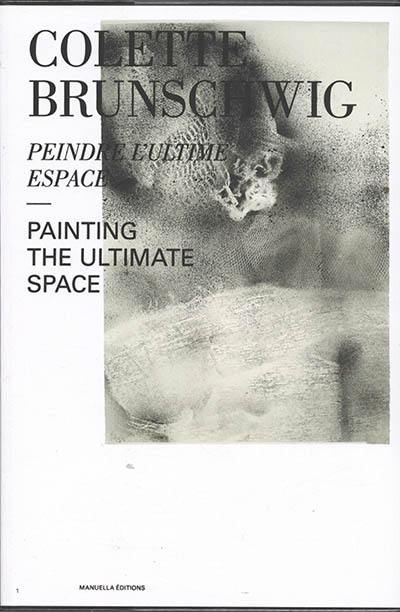
Fiche technique
Format : Broché sous jaquette
Nb de pages : 118, 146 pages
Poids : 1234 g
Dimensions : 22cm X 32cm
ISBN : 978-2-490505-00-5
EAN : 9782490505005
Colette Brunschwig
peindre l'ultime espace
Quatrième de couverture
Peindre l'ultime espace
Née en 1927 au Havre, Colette Brunschwig expose pour la première fois en 1952 à Paris, à la galerie Colette Allendy. Peintures acryliques, encres, gouaches, lavis, aquarelles dessinent une oeuvre plastique inlassablement travaillée par les gris définis comme un intermédiaire pictural des couleurs, le surgissement d'une forme prise dans l'enjeu d'une indéfinition du motif abstrait, et l'inexorable dissolution de l'image et de la représentation.
Colette Brunschwig est une peintre du XXe siècle, dont elle interroge de façon singulière la modernité artistique occidentale, et les traumas historiques que furent la Shoah et Hiroshima. Dans la proximité philosophique d'Emmanuel Levinas, l'artiste, proche du philologue Jean Bollack, joint ses recherches picturales liées aux abstractions des années 1950 à l'étude des traditions exégétiques talmudiques, avant d'y associer, à la fin des années 1960, l'enseignement des peintres lettrés chinois des XIIe et XIIIe siècles.
Assumant une double généalogie avec Claude Monet et Kasimir Malevitch, Colette Brunschwig n'a cessé d'explorer un espace dynamique, traversé d'un souffle intérieur d'expansion et de compression ; espace qu'elle rend patiemment disponible pour recommencer la peinture après l'anéantissement, et y inscrire les strates réflexives et sensibles d'une revie des formes.
Cette première monographie se veut un outil ouvert de connaissance. Elle réunit donc une large iconographie de l'oeuvre peint de Colette Brunschwig, des archives personnelles, des photographies d'expositions, des essais critiques comme autant d'entrées possibles dans le geste pictural et la démarche intellectuelle, la correspondance de l'artiste avec diverses figures célèbres de la scène artistique et littéraire française de l'après- guerre, et ses propres textes, nés de la réflexion de son rapport à l'art moderne et aux transformations technologiques de son temps.
Painting the ultimate space
Born in Le Havre in 1927, Colette Brunschwig exhibited her work for the first time in 1952 at the Colette Allendy gallery in Paris. Her acrylic paintings, ink drawings, gouaches, colour washes and water-colours form a body of work tirelessly inflected by grey, which is defined as a painterly intermediary for colours, an upwelling of form caught up in the challenges of the undefined abstract motif and the inexorable dissolution of the image and of representation.
Colette Brunschwig is a painter of the twentieth century, and she interrogates both Western artistic modernity and the historic traumas of the Shoah and of Hiroshima in a unique way. The artist, who has a strong sense of philosophical kinship with Emmanuel Levinas and was close to the philologist Jean Bollack, combined her painterly investigations linked to 1950s abstract art with the study of Talmudic exegetical traditions and, in the late 1960s, lessons learned from the Chinese Literati painters of the tweifth and thirteenth centuries.
Tracing her twofold artistic lineage back to Claude Monet and Kazimir Malevich, Colette Brunschwig has constantly explored a dynamic space across which the inner breath of expansion and compression blows a space she patiently makes available in order to continue painting when all has been annihilated and to inscribe within her work the reflexive, sensitive strata of newly living forms.
This first monograph is intended to be an open tool for knowledge. It thus includes a large number of reproductions of Colette Brunschwig's paintings, extracts from her personal archives, photographs of exhibitions and critical essays, all forming possible Windows into the artist's painterly techniques and intellectual approaches. It also includes her correspondence with famous members of the artistic and literary scene in post-war France and writings in which she reflects upon her relationship with modem art and the technological transformations of her time.





